A prologue by Dietmar Berger, M.D.*
SVP, Global Head of Clinical Development - Hematology & Oncology, Genentech
*While Dietmar was an employee at the time this article was published, he has since left Genentech.
"Through collective efforts, progress is being made so that cancer will fade into history. I know it may not always seem like it—the disease will claim the lives of nearly 600,000 Americans this year—but the tide is turning.1 Consider this: in 1975, fewer than half of people diagnosed with cancer lived five years past their diagnosis. By 2012, more than two-thirds of people with cancer saw five more birthdays.2 Over the past 40 years, millions of lives have been saved through lifestyle changes, education, screening and groundbreaking science.3

A prologue by Dietmar Berger, M.D.*
SVP, Global Head of Clinical Development - Hematology & Oncology, Genentech
*While Dietmar was an employee at the time this article was published, he has since left Genentech.
In the United States, cancer mortality peaked in 1991.4 Since that time, the cancer death rate dropped 23 percent, translating into 1.7 million lives saved from 1991-2012.5 Much of this survival gain can be ascribed to a number of factors, including reductions in tobacco use, improvements in detection of cancers such as colon cancer and treatments of certain types of solid tumors and lymphoma.6
In the stacked area graph below, you can explore how the mortality rates for different cancer types have changed over the last 40 years. You'll see the mortality rate for some cancers like colon cancer have sharply plummeted, while reductions in mortality have been more gradual for prostate cancer and almost non-existent for bladder cancer and even increasing for liver cancer.
The interactive graphics below show trends in cancer mortality using the number of deaths from cancer per 100,000 people. By using these relative rates—rather than absolute or total numbers—researchers can compare data in the context of how populations differ and change across regions and over time. For gender-specific cancers, such as cervical or testicular cancer, the number of deaths is compared against that gender's population.
The rate you see is also age-adjusted, which means that it's possible to fairly compare the states, despite their different age populations. While a state with an older population will have a higher death rate in general, that difference is accounted for in this adjustment.
You can interpret these numbers the following way: A mortality rate of 200 means there were 200 cancer deaths for every 100,000 people. That means if there were 250 million people living in the United States at the time, this would translate to 500,000 deaths (200 x 250,000,000/100,000).
Two things to keep in mind as you explore. First, advances in care take years to show up in graphs like these. We often won't see the impact of recent advances on overall trends for many years. Second, pay attention to the vertical axis (Y-axis). Zooming in may make changes seem more significant than they are.
Click on a color band to get a deeper look at the mortality trend for a specific cancer type. To the left of the graph you can read about areas of progress responsible for the overall decline in cancer deaths. We recommend you view this on desktop for the full experience.
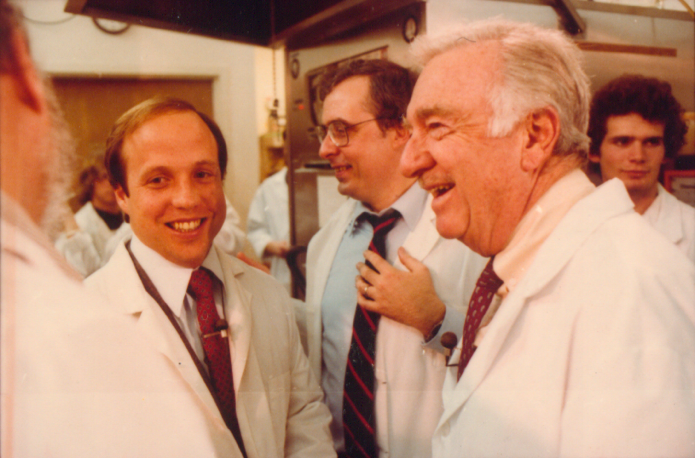
1971
Mary Lasker - Research Advocate
President Nixon signs into law the National Cancer Act "to amend the Public Health Service Act so as to strengthen the National Cancer Institute in order to more effectively carry out the national effort against cancer." Mary Lasker was the principle driver of the National Cancer Act being signed into law. Nearly 20 years earlier, she transformed the American Cancer Society to get more funding for research. Her devotion to medical research helped lay a strong foundation for future advancements in the field.
1976
Dominique Stehelin, Harold Varmus, J. Michael Bishop, Peter Vogt - Scientists
Drs. Stehelin, Varmus, Bishop and Vogt discover that the DNA of normal chicken cells contains a gene related to the oncogene (cancer-causing gene) of avian sarcoma virus, which causes cancer in chickens. This finding eventually leads to the discovery of human oncogenes, laying the scientific basis for personalized medicine.
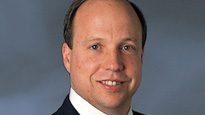
1976
Herb Boyer, Bob Swanson - Venture Capitalist
Venture capitalist Bob Swanson teams up with Herb Boyer, a biochemist and expert on recombinant DNA, to build a business off of genetic engineering technology. The founding of their company, Genentech, marked the birth of the biotechnology industry.
1985
Axel Ullrich, Art Levinson - Scientists
A team of Genentech scientists isolate or "clone" the human oncogene HER2 (also called neu or erbB2). Two years later, Dr. Dennis Slamon at UCLA and a team at Genentech simultaneously show excessive production of the protein encoded by this gene, which occurs in about a quarter of breast cancers (known as HER2-positive breast cancers), is associated with more aggressive disease and a poor prognosis. In 1998, an antibody against HER2, would become the first personalized medicine approved by the U.S. Food and Drug Administration (FDA) for certain types of breast cancer.
1990
Human Genome Project - Research Collaboration
Led by James Watson and Francis Collins, this massive international scientific research project aims at mapping the entire genetic sequence that makes up human DNA. The project, which was declared complete in 2003, has vastly improved our understanding of cancer and mutations linked to different forms of the disease. It remains the largest collaborative biological project in the history of the world.
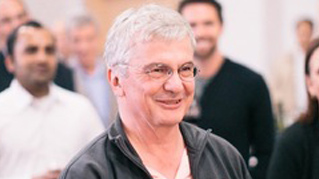
1996
Napoleone Ferrara - Scientist
Building on the work of previous researchers like Judah Folkman, Napoleone Ferrara and his team demonstrate the importance of vascular endothelial growth factor (VEGF) in signaling the growth of new blood vessels (angiogenesis), a process that's essential for tumor growth. Their research ultimately led to the development of the first anti-angiogenic medicine.
2000
Gordon Freeman, Tasuku Honjo - Scientists
Gordon Freeman, Tasuku Honjo, and their colleagues discover that cancer cells often produce a protein called PD-L1 and that this signal flips a switch on immune cells, turning off the immune cell's attack on the cancer. This was one of the first papers showing that the PD-1 and PD-L1 proteins are used by cancer as a sort of "cellular camouflage," tricking the immune system into seeing it as a normal cell. Today there are approved medicines that target the PD-1 and PD-L1 pathways.
2000
Katie Couric - Advocate
Award-winning journalist, TV personality, and philanthropist Katie Couric launches a national colon cancer awareness program. Couric's awareness-building efforts led to a statistically significant increase in colonoscopies, confirming that a celebrity spokesperson can have a "substantial impact" on public participation in awareness programs. This "Katie Couric Effect" was studied and published in a peer-reviewed journal. Later, in 2008, Katie Couric co-founded Stand Up To Cancer and her advocacy efforts continue to this day.
2001
Brian Druker - Doctor
FDA approves the first oral personalized medicine for cancer, which targets a unique protein produced by the Philadelphia chromosome, and was approved for chronic myelogenous leukemia (CML). Later, it is also approved for treatment of gastrointestinal stromal tumors (GIST) that carry the same genetic mutation. Importantly, Dr. Druker's work contributes to the fact that although some cancers may arise in different parts of the body, they may have the same underlying cancer-causing genes. Druker, along with biochemist Nicholas Lydon and other colleagues were awarded the Lasker-DeBakey Clinical Medical Research Award in 2009 for "converting a fatal cancer into a manageable condition."
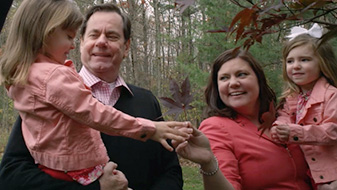
2006
Jack Whelan - Patient
After discussing his symptoms with his doctor, Jack is diagnosed with a rare type of non-Hodgkin's lymphoma, a blood cancer. After reviewing treatment options, Jack makes the decision to explore participating in a clinical trial. Over the past nine years, Jack has participated in seven clinical trials to treat his disease, and encourages other people with cancer to take an active role in exploring treatment options, including clinical trials.
2006
Concerned Parents
The FDA approves the first vaccine against human papilloma virus (HPV), which protects against infection by the two types of HPV that cause approximately 70% of all cases of cervical cancer. This landmark preventive cancer vaccine would not be available if not for the courage of parents and children who participated in the clinical trials.
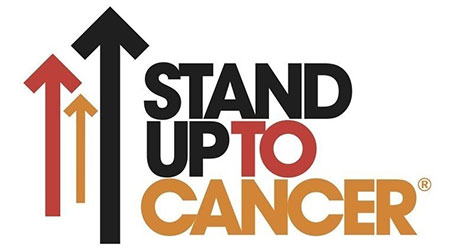
2008
Stand Up To Cancer
Stand Up To Cancer raises funds to accelerate cancer research that can be translated into new therapies. Since its inception, over $370 million has been pledged, supporting collaborative research by more than a thousand scientists and funding clinical trials involving more than 8,000 cancer patients.
2010
United States Preventative Services Task Force
Initial results of the Lung Cancer Screening Trial show that screening with low-dose computerized tomography (CT) reduced lung cancer deaths by about 20% in a large group of current and former heavy smokers. The United States Preventive Services Task Force recommended lung cancer screening for certain people with a history of heavy smoking to improve chances for curative treatment approaches to lung cancer.
2011
Richard Pazdur
Dr. Richard Pazdur, who leads the Office of Hematology and Oncology Products at the FDA, and his team move at lightning speed to approve the first cancer immunotherapy—a new class of medicines that retrains the body's own immune system to fight cancer.
2012
Ellen Sigal - Patient Advocate
When Ellen Sigal's sister died of breast cancer, she took action. Ellen founded Friends of Cancer Research (Friends), was a Presidential appointee to the National Cancer Institute's National Cancer Advisory Board, and served a 6-year term on the Board of Governors of the Patient Centered Outcomes Research Institute. Currently, she is Acting Chair of the board of directors of the Reagan-Udall Foundation and was named to Vice President Biden's Cancer Moonshot Blue Ribbon Panel, in addition to other leadership positions she holds within a broad range of cancer advocacy, public policy organizations, and academic health centers. Friends proposed the idea for the breakthrough therapy designation in 2011 and within 13 months the designation was signed into law. The "Advancing Breakthrough Therapies for Patients Act," in part, resulted in a change to FDA's legal authority that allowed them to grant Breakthrough Therapy Designation to investigational medicines that show early promise for treating a serious or life-threatening disease.
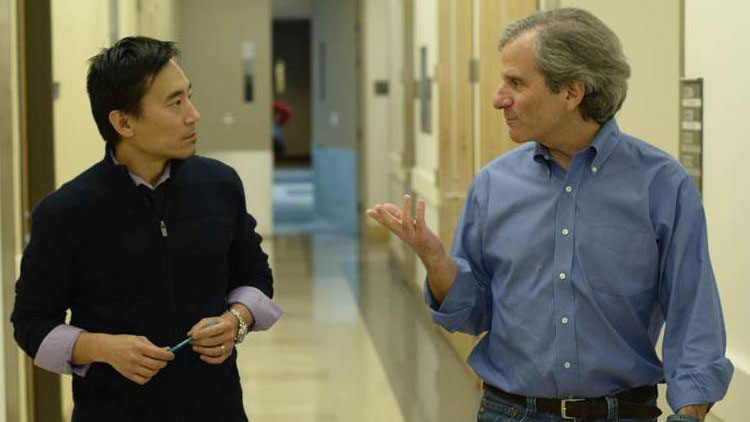
2013
Dan Chen, Ira Mellman - Scientists
The publication of the Cancer-Immunity Cycle offered an intellectual framework that has become a widely accepted basis for cancer immunotherapy research around the world. You can read more about their eureka moment here.
2013
Bob Carlson
Two years earlier in 2011, Bob would have told you that his health was good—up until that November, when he awoke with pain radiating downward from his neck. Bob was diagnosed with Stage IV lung cancer and enrolled in a clinical trial for an investigational immunotherapy. Bob understands that there are no guarantees, but for now he enjoys bird watching and travelling with his wife Julia. You can read more about Bob's story here.
2014
The Cancer Genome Atlas (TCGA) - Research Consortium
Researchers from TCGA project, a joint effort by NCI and the National Human Genome Research Institute to analyze the DNA and other molecular changes in more than 30 types of human cancer, find that gastric (stomach) cancer is actually four different diseases, not just one, based on differing tumor characteristics. This finding from TCGA and other related projects may potentially lead to a new classification system for cancer and is the result of advancements in genome sequencing technology.
2016
American Association of Cancer Research (AACR)
In response to Vice President Biden's quest for "a moon shot in this country to cure cancer," the AACR convened a distinguished panel of cancer researchers and physician-scientists who met with the vice president's office to help realize his goal of making "an absolute national commitment to end cancer as we know it today." The fifteen AACR members, who are among the most prestigious cancer researchers in the world, highlighted the considerable progress in cancer research that has led to tremendous potential in areas such as precision medicine and immunotherapy.
Fighting cancer is a shared responsibility. We're all in this together—each and every person.
— Sandra Horning, M.D.
Read more on Dr. Horning's perspective about the Cancer Moonshot here.
Although cancer mortality is on the decline in the United States, progress against the disease has not been consistent across the country. The map below illustrates mortality rates of different cancers at a state level as reported by the U.S. Centers for Disease Control and Prevention (CDC).
people per 100,000 persons died of in the U.S. in . (Age Adjusted)
Between 1999 and 2012, cancer mortality rates decreased in major urban areas. A lack of consistent data from rural areas makes comparisons of mortality rates between urban and rural areas difficult.21 Despite this, statistically significant trends in urban versus rural age-adjusted cancer incidence and mortality have been observed.22 Differences in mortality rates are multifactorial but could include exposure to carcinogenic factors, lifestyle choices and access to doctors, screenings and treatments.23
1999
Mortality Rate
194.3
2012
Mortality Rate
151.7
22%
Improvement
1999
Mortality Rate
179.3
2012
Mortality Rate
146.1
19%
Improvement
1999
Mortality Rate
213.4
2012
Mortality Rate
172.6
19%
Improvement
1999
Mortality Rate
211.3
2012
Mortality Rate
161.3
24%
Improvement
1999
Mortality Rate
223.2
2012
Mortality Rate
177.9
20%
Improvement
1999
Mortality Rate
179.2
2012
Mortality Rate
144.6
19%
Improvement
Cancer is a disease rooted in the imperfection of our biology. It's fitting that one of the keys to defeating it may be within that same biology.
There is unprecedented excitement amongst doctors and scientists around a class of medicines called cancer immunotherapies. These medicines work by harnessing the power of the immune system to recognize and destroy cancer.
Immunotherapies are the result of the bravery of everyone who participates in research—the scientists working in the lab, the doctors and nurses overseeing the studies, and especially the patients and their families who bravely participate in clinical trials. The advent of cancer immunotherapy is just one example of how the next breakthroughs in cancer come from all of us working together.
The people who participate in clinical trials are the unsung heroes in the discovery of new treatments.
Unfortunately, many myths and misconceptions prevent people from enrolling in clinical trials. In collaboration with the American Cancer Society we developed About Clinical Trials, a program to address these myths by empowering people to learn more about cancer clinical trials. For more information, including a clinical trial matching service, go to www.LearnAboutClinicalTrials.org.
Today, more than 3,000 active cancer clinical trials are evaluating nearly 800 medicines in the United States.24 These trials are the front lines of cancer research and may lead to the next major advancement in the fight against cancer.